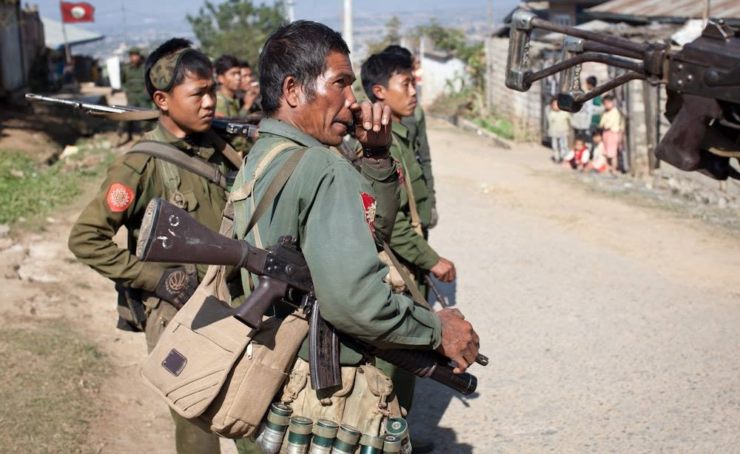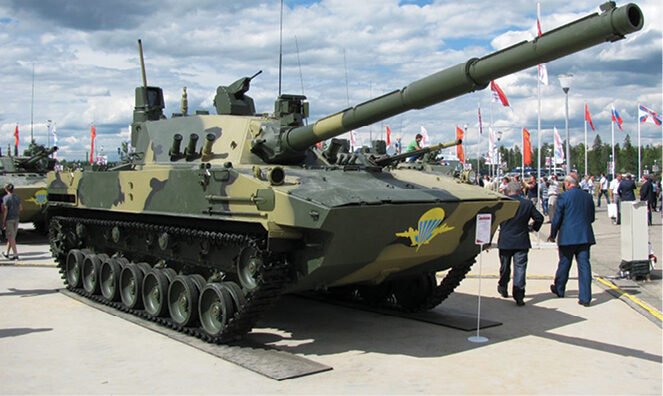
India’s Perilous Security Canvas: In the present geopolitical melee, the tools of strategic coercion, border activation, and proxy war are finding new ways to achieve the desired end. Closer home, the collusive trio of a Talibanised Afghanistan, revisionist Pakistan and belligerent China has added a new dimension to regional instability that directly impacts the Indian security canvas. Pakistan and China may have reduced the likelihood of a full-scale war but have smartly increased the salience of military coercion by keeping the borders active, which portends a flare-up at short notice.
The recent threat manifestations on our Western and more significantly on our Northern borders are witness to the same. The sparks of Proxy War continue to not only ignite J&K but also seem to have reignited the playground in NE with possible Chinese connivance, as seen in the recent ambush of an Army convoy in Manipur. For India, it defines a Tsunami warning to its security canvas and a wake-up call to its strategic leadership. Business as usual will not work.
Strategic Need: Politico-Mil Transformation
The response to national security threats has to be based on a whole of nation approach, yet when sovereignty is challenged the nation’s insurance remains the defence forces as the primary player. This requires a politico-military response in tune with the realities of the present and future threats to a nation. A holistic politico-military transformation is the need of the hour. To be capable of countering future threats, the nation must address all three critical components; transformed politico-military culture, transformed defence planning process and transformed joint service capabilities through supportive budgetary allocation and matching reforms.
An effective transformation strategy in the Indian context must tackle the following seven issues: the “bigger the better” syndrome, the absence of a strategic culture exemplified by the void of a national security strategy, overcoming the ambiguous and often contradictory strategic messaging, the sustenance and technology voids in tune with contemporary warfare, the sluggish reforms in the defence budget, bureaucratic decision-making apathy, policy instability and risk averseness, and the absence of harnessing joint force capabilities.
Two basic rules of defining defence capabilities must never be forgotten by strategic decision-makers. One, deterrence is a factor of capability, credibility and communication. Two, the relevance of a force is a factor of its deployability, employability and capability to meet future threats.
Time to Revisit Indian Military Strategy
The need therefore is to add teeth to our conventional deterrence and tools of future warfighting in order to be ready, relevant and technologically enabled for today’s war and future threats with an accent on indigenous character. India’s military strategy must accordingly focus on ‘Offensive Domination’ with Manoeuvre Warfare orientation and ‘Deterrence by Denial’ rather than the current deeply-embedded attritionist mindset and Punitive Deterrence strategies that preclude preemption, dislocation and disruption as means of defeat. Punitive Deterrence is reactive by character and best suited for Nuclear Deterrence and not conventional deterrence. This is the reason our conventional deterrence has repeatedly failed to hold its ground both on the Western and Northern front. For the proxy war, it must address the indoctrination and ideological factors besides effective border management to deny oxygen to perpetrators of proxy war. The current numbers game of tit-for-tat is not the solution and tackles only the effect, not the cause. Accordingly, the internal domain needs to be the responsibility of empowered PMF/CPO/State Security Forces leaving the Defence Forces focused on their primary task, with the main front being the Northern borders.
Further, at the operational level, there is a need to understand the two basic concepts of ‘denial versus defence’ and ‘holding versus domination’. Denial seeks to make conflict/coercion look bad to the enemy, while defence seeks to make conflict/ coercion better for oneself by stalling the aggressor. Similarly, ground holding mindsets bring in reactive ethos and predictability, whereas domination brings in aggressiveness and encourages creativity. This is the essence and something the Indian establishment would do well to differentiate and arm its deterrence and warfighting capabilities with denial and offensive domination strategy.
Future Land Forces Structural Imperatives
The need is for an agile, integrated, sustainable, operationally-mobile combined arms capability to dominate the key operational factors of “Time-Space-Force-Information” in an essentially joint operational environment. The level of interoperability and complementarity between land, sea and aerospace must achieve the desired speed, economy and operational acceleration. The challenge of this synergised continuum lies more in present silos mentality and service-centric mindsets.
The focus of the land forces must be on combined arms modular agile forces based on intrinsic combat, combat support and logistics elements. These should include Light Tanks, Wheeled Infantry Carriers, Attack Helicopters, UAVs, Self-Propelled Air Defence, precision lethal deployable Artillery and C5ISR capability. However, their combat effectiveness would be a factor of rapid deployment ability, integrated training, interoperability, complementary capabilities, and the competence of commanders to synchronise their effect at the operational level. The requirement is for knowledge-based, decision-oriented and technology-empowered lean and agile forces to execute missions faster and with greater effect. The mantra is quality over quantity and capability over capacity.
Along with restructuring, the focus must be on molding competent military scholar warriors with traits such as being proactive in conditions of ambiguity, creativity, and nonlinear thinking. Accordingly, our Professional Military Education needs to require a review. Future commanders need to fight smart and not allow predictability and set-piece attritional mindset operations to stall the tempo but focus on achieving strategic, operational and tactical dislocation of enemy forces. The key to the defeat mechanism is targeting the adversaries mind first and then his capabilities.

Modernisation Strategy Contours for Land Forces
The art and science of modernisation strategy will be to balance capability, sustainability, and readiness within the allocated resources to achieve the desired ends. The contours of such a strategy must entail:
(a) Prioritised Modernisation Based on Value – Vulnerability and Risk Analysis: The modernisation strategy must give quantifiable upgraded value and mitigate vulnerabilities of the warfighter. Risk is a function of the values of threat, consequence, and vulnerability in time and space. Prioritised modernisation must be based on acquisitions adding maximum value to combat effectiveness, mitigating critical vulnerabilities and accepting certain risks in temporal terms.
(b) Tiered Modernisation and Judicious Scaling: This approach prioritises in terms of progressive capabilities and tiered modernisation while mitigating the risks of low funding reality. The Army must place scaling priority on frontline formations most operationally critical and at a greater risk. This would require judicious scaling as per operational priority.
(c) Technology Induction Focus: Enhanced functional capabilities and increased weapon effectiveness index contributing to combat overmatch must dictate the desired technologies. Many capability gaps can be closed with equipment or mature technologies that already exist, thus meeting time criticality. Simultaneously there is a critical need for investing in Defence R & D for future time-critical disruptive technology infusion. The greatest challenge remains fiscal support and investment in R&D to science and disruptive technology projects. The key priority technologies relevant to the Indian operational context that merit deeper analysis are:
- Detection/ Low-cost overhead persistent sensing technologies as part of the C5ISR capability building.
- High-energy lasers for military application through land, air, sea and space-based systems.
- Hypersonic strike technology.
- Artificial intelligence (AI) and big data analytics.
- Advanced cyber capabilities.
- Robotics and Unmanned Systems, including countermeasures.
(d) Balance Modernisation and Sustenance: Modernisation and sustenance cannot be progressed in compartmentalised mindsets. The fiscal requirements for modernisation must be carefully balanced against the financial requirements necessary for sustaining the force at hand in its life cycle. Thus, standardisation and commonality of a family of platforms and interoperable technologies will reduce sustenance costs with better inventory management.
(f) Indigenous Solutions to Indian Warfighting: Modernisation foundation must be based on advantage to indigenous capabilities even if it costs marginally higher, but there must be NO dilution in desired capabilities for the warfighter.
Conclude
The future challenge however lies in adding teeth to our defence capabilities both doctrinally and structurally, bridging operational voids and building future capabilities in a time-sensitive domain. The reality that must serve as a constant reminder to the nation is that, given our turbulent geostrategic environment, intentions can change fast, but capability development and equipping future forces takes time. The security challenges of tomorrow will thus have to be met by the defence capabilities we develop today. The nation cannot be found wanting at times of crisis. Indeed “Nation Above All”, is the need of the hour.
-The author is a PVSM, AVSM, VSM has had an illustrious career spanning nearly four decades. A distinguished Armoured Corps officer, he has served in various prestigious staff and command appointments including Commander Independent Armoured Brigade, ADG PP, GOC Armoured Division and GOC Strike 1. The officer retired as DG Mechanised Forces in December 2017 during which he was the architect to initiate process for reintroduction of Light Tank and Chairman on the study on C5ISR for Indian Army. Subsequently he was Consultant MoD/OFB from 2018 to 2020. The Officer is a reputed defence analyst, a motivational speaker and prolific writer on matters of military, defence technology and national security.The views expressed are personal and do not necessarily carry the views of Raksha Anirveda.








